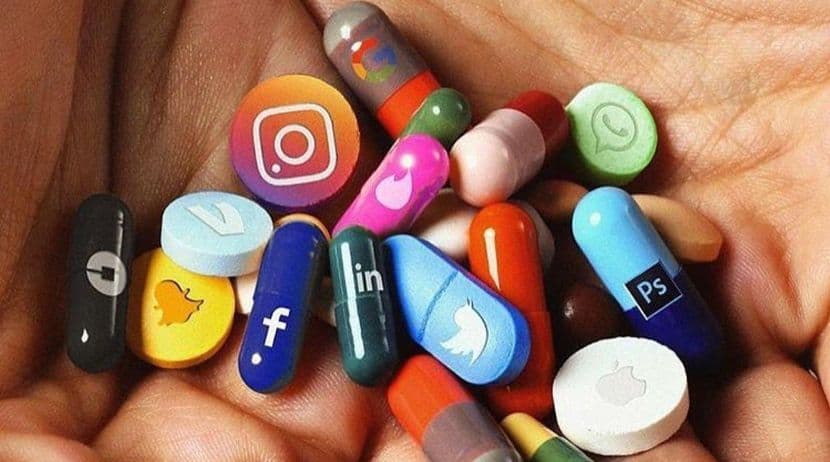The Hardest Drug to Swallow: Social Media
January 28, 2019
When we come across the word “addiction,” we associate that word with abuse using drugs or harmful substances. Little do we know that we consume a drug every day, and that is the overconsumption of social media. As social media is still on the rise with content that captures its viewers, more people are becoming hooked onto what’s happening within the virtual world. According to a study conducted by Phil Longstreet, an estimated 210 million people are victims of social media addiction.
Whenever you receive a like on Instagram to or retweet on Twitter, the dopamine in our brain becomes active. Dopamine, in simplest terms, is the “rewarding and pleasure” drug. It’s a neurotransmitter, like a messenger in our brain, carrying information from one neuron to another. It’s linked to multiple feelings such as love, motivation, attention, and addiction. Dopamine plays a role in everything that happens in our lives and brain. However, too much dopamine can result in addiction to whatever behavior triggered the increase.
Drugs like cocaine and amphetamines allow extra dopamine to remain in your brain longer than normal, resulting in heightened feelings of pleasure and a need for more of the drug. It not only rewards us, but it makes us anticipate future pleasure, like the anxiousness of getting likes on the new photo you just uploaded on Instagram. The creators and inventors of social media apps are well aware of how this works—it’s known as the “pleasure-pain-repeat” cycle. Dr. Lustig, the author of “The Hacking go the American Mind, who’s a medical professor, states, “Technology is not a drug, but it might as well be. It works the same way…it has the same results.” Technology can cause stress in the brain, which can lead to addiction. This is how it works: The stress shuts down the prefrontal cortex of our brain, which normally limits dopamine and our sense of pleasure or reward. When our brain adjusts to a higher level of dopamine, it wants us to keep seeking out that addictive substance or habit for more. This can be referred to as the “Dopamine Loop.” When you post something on social media, you will most likely receive likes within a few minutes. Dopamine starts at “seeking” behavior (posting something for your followers), and right after, you get rewarded (with likes), which makes you seek more and more to do it again.
Chances are you checked your notifications for at least one of your social media profiles, or at least thought about it within the past few minutes. That’s not technology that’s creating the temptation….that’s your brain. It’d like some dopamine…now.




